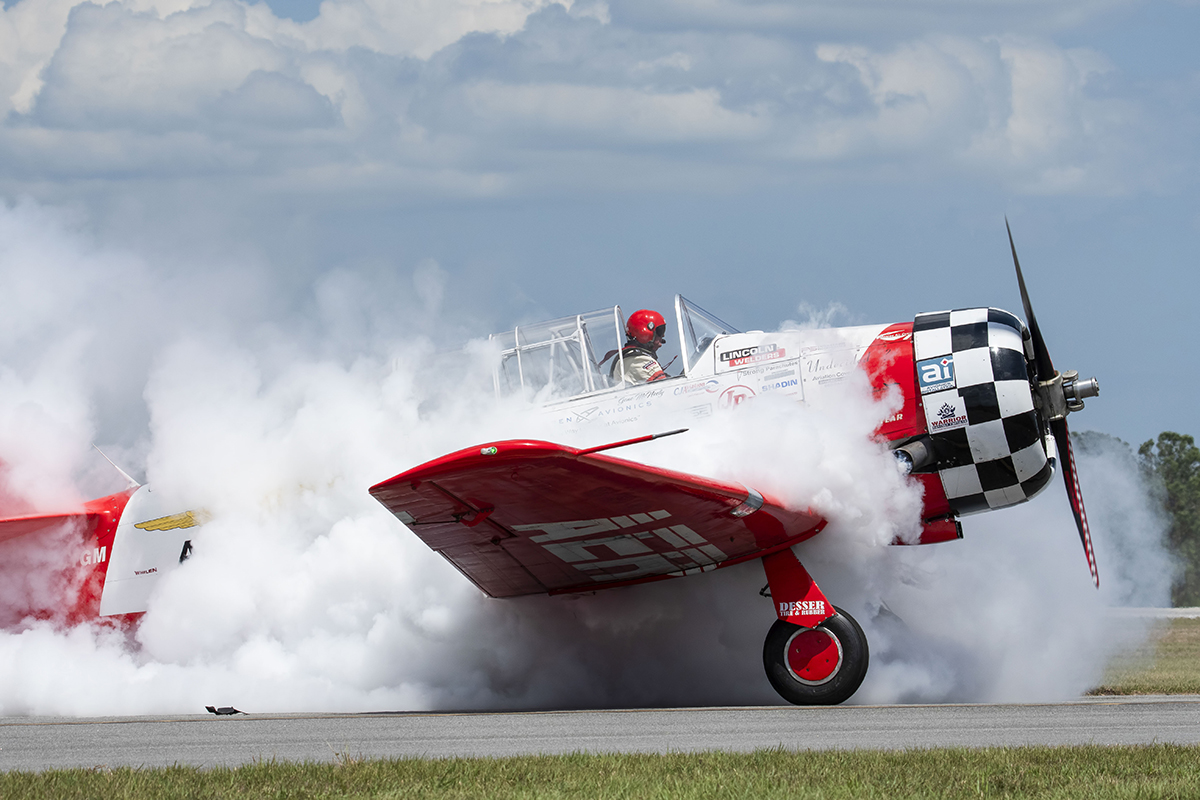How to Photograph an Air Show
Carolyn Hutchins uses the Tamron SP 150-600mm VC G2 lens to capture the breathtaking feats witnessed at Space Coast sky spectaculars.
More Photo Tips | Video Gallery | Photo Gallery | Enewsletter sign-up
By Jenn Gidman
Images By Carolyn Hutchins
Carolyn Hutchins can usually be found, camera in hand, photographing birds of prey, alligators, and crocodiles at her place of employment, central Florida's Gatorland. But the nature and wildlife photographer has also been a longtime fan of the air shows that take place up and down the Sunshine State's Space Coast, including the Warbird Airshow in Titusville, as well as the Sun 'n Fun show in Lakeland. "I'm on the photography team for Sun 'n Fun, so I get excellent access," she says.
To capture all of the in-sky and on-the-ground action, Carolyn uses the Tamron SP 150-600mm VC G2 lens for these events. "I love the focal length range of this lens," she says. "Having 400mm or 500mm is perfect for photographing single aircraft, but it's not always ideal when you have six or seven planes flying in formation together. That's when the 150mm end of things comes into play. I appreciate that versatility. Also, because I shoot handheld and do lots of panning when I'm at these shows, the Vibration Compensation (VC) feature on this lens, with a mode specifically set for panning, is especially handy for helping me avoid camera shake and keep my images sharp."
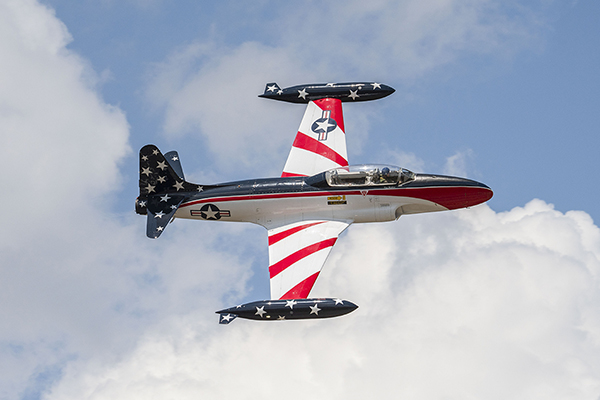
150-600mm (240mm, F/8, 1/2500th sec., ISO 100)
Click image to view larger
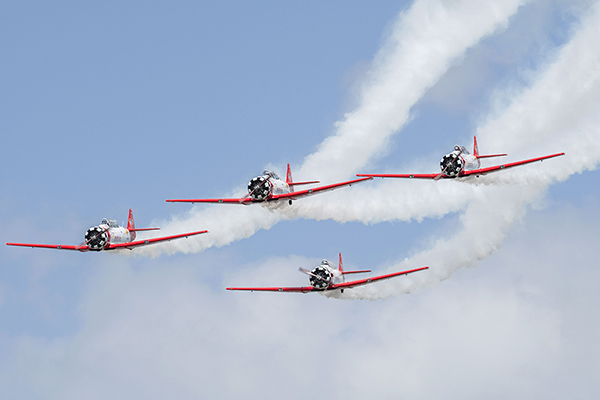
150-600mm (260mm, F/7.1, 1/1250th sec., ISO 100)
Click image to view larger
Although everyone tends to want to be at the show's center, Carolyn notes that some of the most eye-catching photos can emerge from more unusual vantage points. "Of course, it depends on what access you can get," she says. "And the show's center is where many things are happening. But you don't always have to be right smack in the middle, because the planes fly back and forth and pull off a bunch of banking moves, especially at the end of the runway. So if you can swing a spot at the edge of the show grounds, try for that. I've also created some terrific images from the air traffic control tower, or, at this year's Sun 'n Fun, from inside one of the planes themselves."
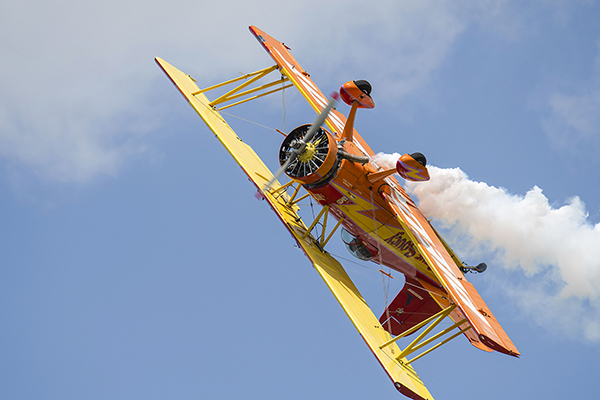
150-600mm (450mm, F/6.3, 1/1600th sec., ISO 100)
Click image to view larger
How Carolyn sets her camera up depends on the weather conditions and the sky that day. "Most of the time I leave everything on manual, except when I'm shooting propeller aircraft," she says. "Then I use Shutter Priority mode, because with Shutter Priority I can use a slower shutter speed. When you get a shot of the propellers, you don't want to completely freeze everything; you want at least a little bit of blur to show the prop moving;. I also shoot in Continuous Burst mode for aerobatic maneuvers when the planes are flying around. For static displays on the ground, I don't need to do that."
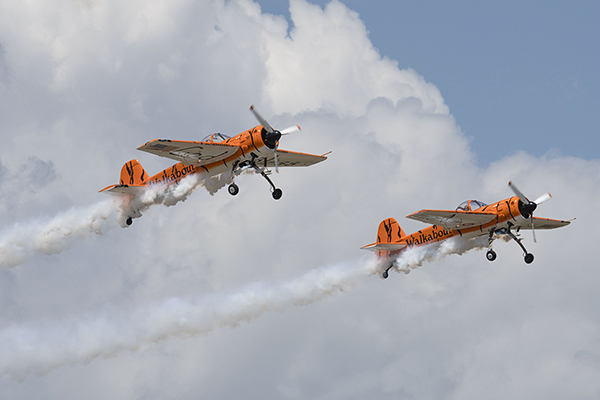
150-600mm (240mm, F/8, 1/1600th sec., ISO 100)
Click image to view larger
When covering air shows, Carolyn puts together a complete narrative of the day, including close-up solo shots, multiple planes flying in formation, detail images, and even spectator reaction. One of the most visually interesting aspects of an air show involves a plane's smoke trails, which are artificially created via a special system that typically uses biodegradable mineral oil and is controlled by the pilot. Such a spectacle was first used by an aerobatics team in the late 1950s.
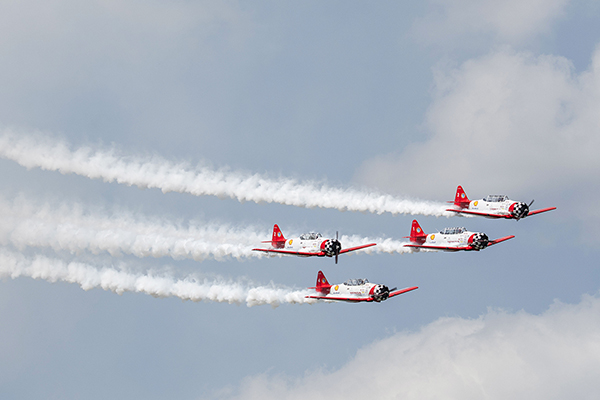
150-600mm (150mm, F/7.1, 1/1600th sec., ISO 100)
Click image to view larger
"The smoke trails are very cool to capture," Carolyn says. "They show more movement in the photo, which is always appealing; it's also another reason I like that this lens can go to 150mm, because when the pilot starts spitting out the smoke, I can zoom out to capture both the plane and the trails. The pilots will even sometimes trigger the smoke when they're on the ground, like in the photo you see here with the plane on the runway. This pilot came down right in front of the crowd and just let the smoke fly. The only drawback is that, as the show goes on, the smoke tends to accumulate and the air gets really foggy."
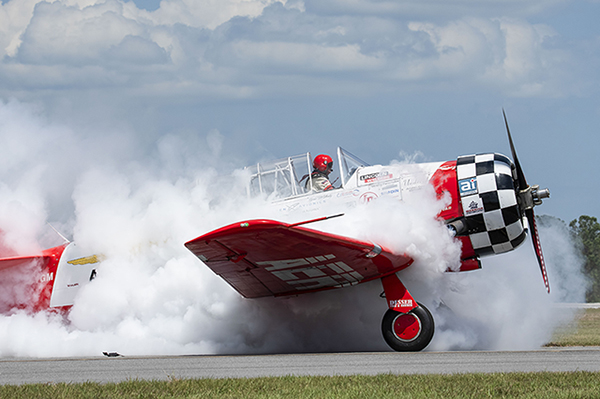
150-600mm (160mm, F/8, 1/2500th sec., ISO 400)
Click image to view larger
Photographing aircraft isn't Carolyn's only focus when she's behind the camera. "It's not always all about the airplanes—it's about the people, too," she says. "There are so many different players involved in a show like Sun 'n Fun, from the mechanics and air traffic controllers to the pilots themselves. That's why I try to include shots like the one you see here of the parachutist with the American flag. That's a member of the Golden Knights, the US Army's aerial demonstration team. What happens is someone will come out and sing the national anthem and, as the song is taking place, a parachutist jumps out of one of the planes with an American flag and lands right at show center in front of everyone. It's a dramatic moment that gets the crowd excited, so it's definitely something that's on my radar to capture. Always be looking for those kinds of people-centered moments at shows like this."

150-600mm (400mm, F/7.1, 1/1000th sec., ISO 100)
Click image to view larger
Carolyn has one critical piece of advice to nail photos at an air show. "Each individual photo depends on whether the planes are flying at you, away from you, or sideways, and you have to master how to take each of those kinds of shots," she says. "And being able to master that hinges on repetition, which comes only through lots of practice. That's both in the moment, meaning if an air show is held over a few days and you can swing it so you can attend all of those days, and over the long term, meaning you're able to go to multiple shows year after year. Even then, you'll still get shots you can't use; I still do. That's OK—keep shooting, and you'll see the number of usable images keep increasing."
To see more of Carolyn Hutchins' work, go to www.carolynhutchins.com/.
More Photo Tips | Watch Videos | Learn More About Tamron Lenses | Photo Gallery
